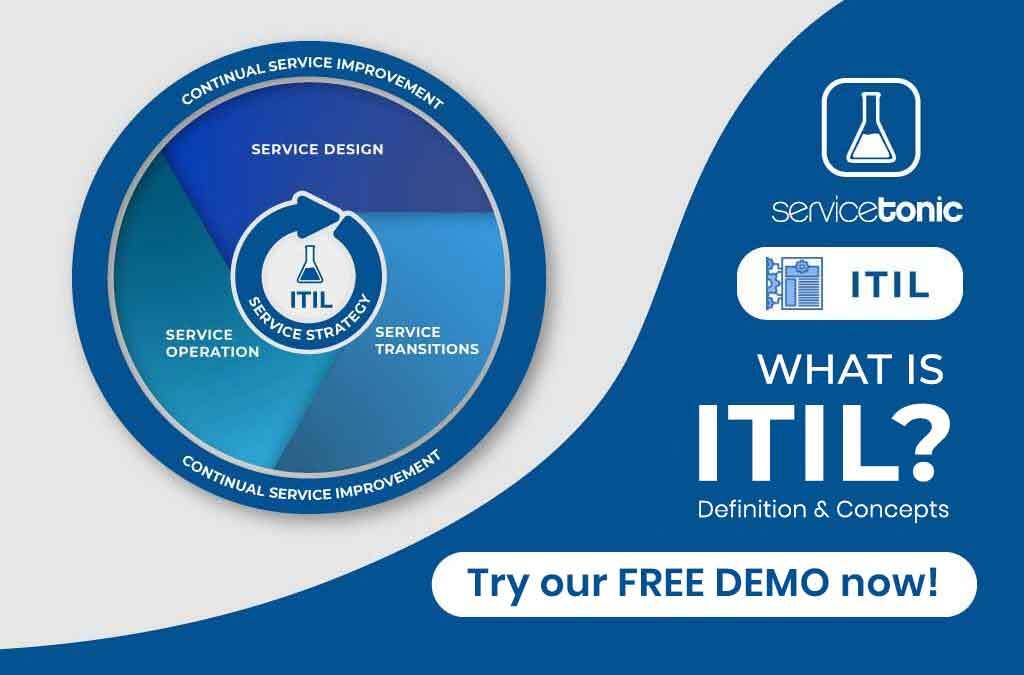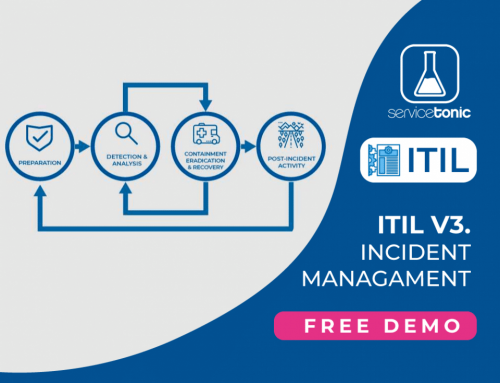Table of Contents
ITIL concepts and principles
ITIL is a framework that offers a series of best practices to be applied in IT Services Management. (Information Technology), and describes in detail a vast set of functions and processes designed to help organizations achieve quality and efficiency in IT operations.
Main concepts and principles of ITIL best practices
The main ITIL concepts and principles are:
Alignment of IT with the business
One of the main functions of IT should be to support the business in achieving its goals. This is the main concept of ITIL and it introduces processes whose only mission is to align what IT delivers (or will deliver) with what the business needs (or will need).
Service
ITIL groups what IT provides to business as Services.
A Service is a means of delivering value to customers by facilitating outcomes that customers want to achieve without them having to bear the costs and risks associated with achieving these results.
The key word here is results, which is what will allow the business achieve its goals. Customers pay for results, which is the WHAT not the HOW.
A service must provide a utility and a warranty. For example, the Order Processing Service should allow recording orders through the company website (utility) 8×5 uninterrupted hours (warranty).
Service Management is a set of organizational capabilities for efficient delivery of value to customers in the form of Services.
Functions, Processes and Roles
Normally organizations are structured in functions.
A function is a specialized unit in performing a certain activity and is responsible for its outcome. The function includes both the team of people that perform it and the equipment used to carry it out.
The functions are usually efficient in performance through specialization, but this specialization can be a problem if the functions do not work in a coordinated way to achieve the overall objectives of the organization.
Processes are used to avoid this problem. They improve coordination and control among functions.
A process is a set of interrelated activities designed to meet a specific objective.
All the processes have the following characteristics:
- Have specific inputs, outputs and results.
- Are initiated in response to an event.
- Are measurable.
- Have a receiver of the process output.
A role is a set of responsibilities, activities, and authorizations assigned to a person or a team. In ITIL roles are defined for each process in order to ensure that all necessary tasks are performed within the process.
A person can have multiple roles assigned
Measure to manage
- You cannot manage what you cannot control.
- You cannot control what you cannot measure.
- You cannot measure what you cannot define.
Measurement is a fundamental concept in ITIL that helps us identify areas for improvement and to validate whether an improvement has met expectations as to warn us in advance of a potential problem.
ITIL definition of Lifecycle
ITIL defines a lifecycle for Service Management that allows us to consider the services in a global way: rationale, design, construction, testing, deployment, upgrade, and removal.
The phases of the lifecycle are the following:
- Strategy: Promotes the vision of Service Management as a strategic asset. Among other functions, it defines the policies to follow and identifies, selects and prioritizes the services offered to customers.
- Design: Its main objective is to design services aligned with business goals and policies set out in the Strategy.
- Transition: It is responsible for building, testing and deploying designed services in the production environment in a smooth way.
- Operation: Performs all activities necessary to keep the services running within the quality parameters agreed with the client. It is the phase of the lifecycle where the value generation of the Services is carried out
- Continuous Improvement: Works along the other phases of the lifecycle and it is responsible for ensuring that we are continually improving and realigning our services with our business goals.
“In the following articles we will see in more detail each of the phases of the lifecycle.” – Manuel Molero, CTO ServiceTonic




